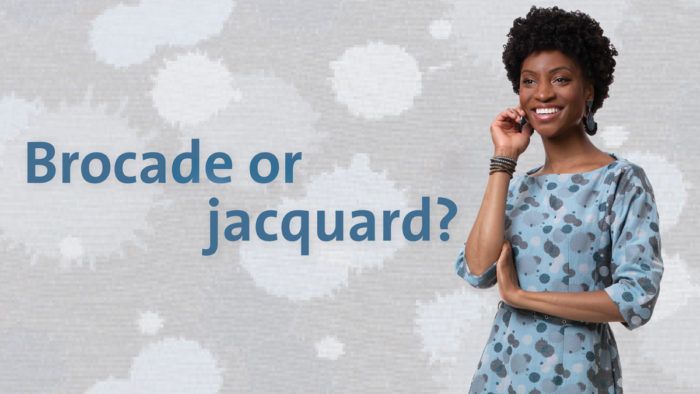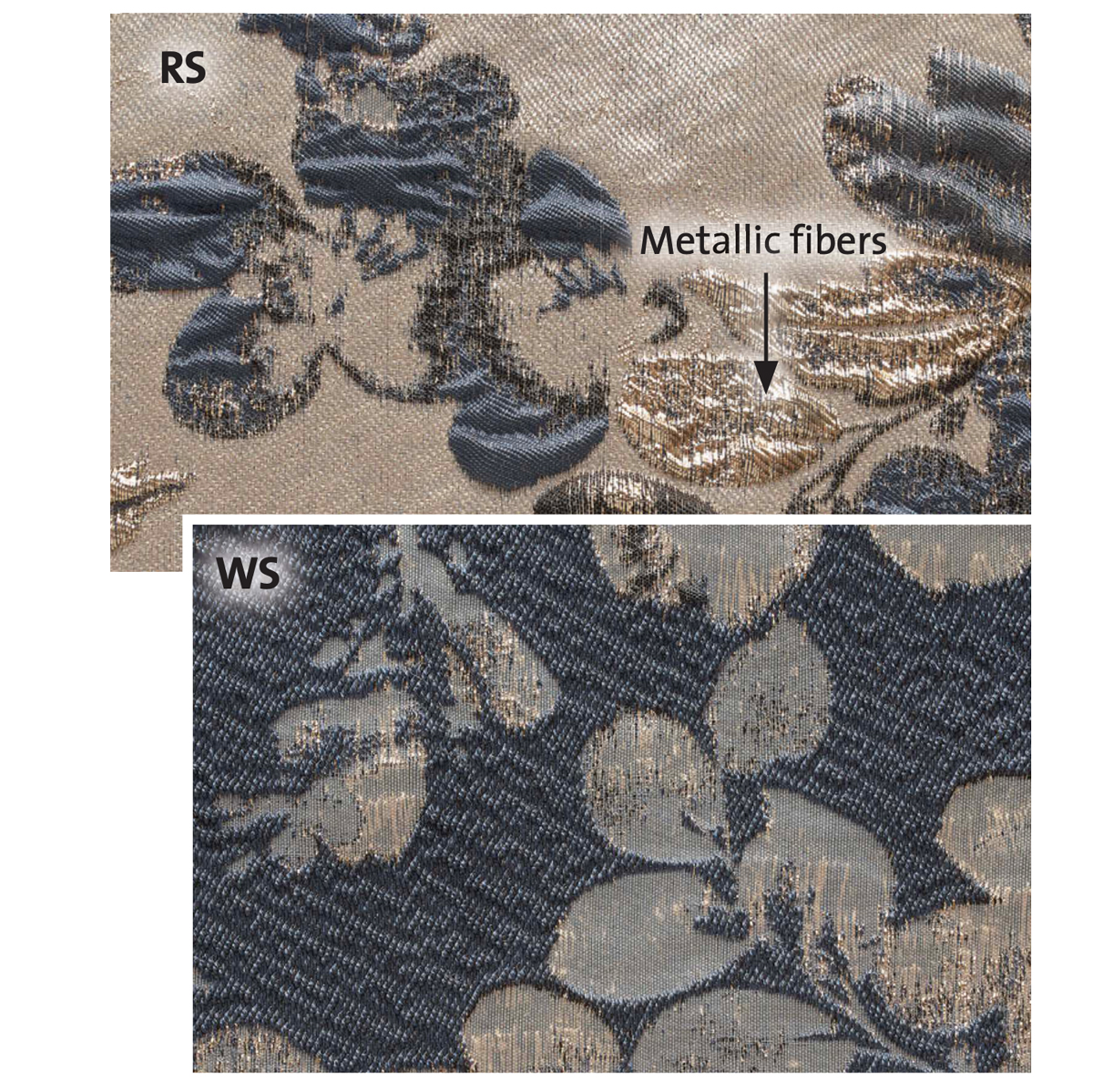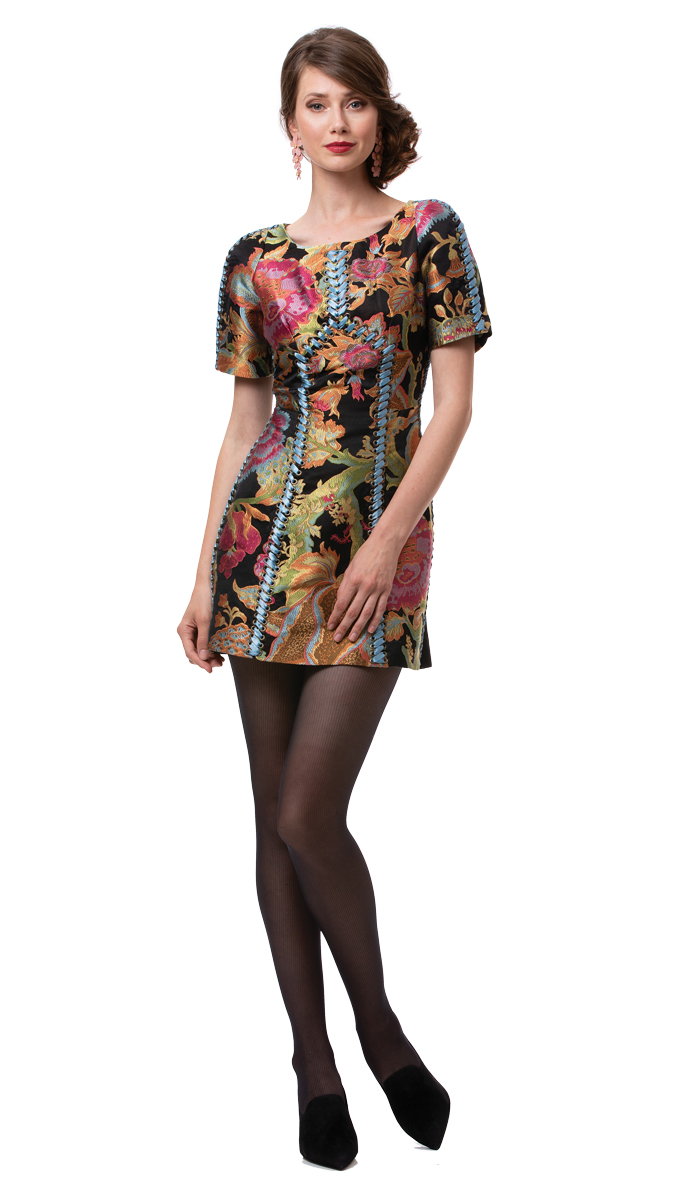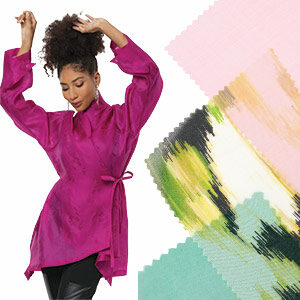Brocade or Jacquard?
Look at the wrong side to tell these textiles apart
Sewers want to know exactly what they’re buying when they purchase fabrics. However, the difference between jacquard and brocade is not always explained, and the terms can be used interchangeably by fabric sellers. A glance at the wrong side can help tell them apart, but there is more to know about these fabrics.

The jacquard loom
In 1804, French inventor Joseph-Marie Jacquard created an improved version of the draw loom. His eponymous loom made it easier to produce intricate fabrics. Jacquard’s invention debuted automation, with hole-punched cards guiding the machine to manipulate warp yarns that determine the weave structure.
Before the jacquard loom, brocades and other complex fabrics required a master weaver assisted by a draw boy, who stood on a stool next to the loom and lifted sections of the loom to set the weave pattern. With the new loom, weavers of nearly any skill level could weave intricate fabrics. At the time, weavers were furious and thought Jacquard’s invention would rob them of their jobs. The inventor faced threats to his life. However, the silk trade thrived and the jacquard loom was eventually accepted by the weaving industry.
A lasting legacy
Jacquard’s creation lived on: For nearly 200 years, the jacquard loom, as he designed it, remained the pinnacle of weaving technology.
Recent advancements in computerization have led to the punch cards being replaced with digitally pixelated images, but the principle remains the same. Jacquard’s automation system is said to have formed the basis for the first computer, designed by Charles Babbage and Ada Lovelace.
What’s the difference?
Technically speaking, most brocades fall under the umbrella term “jacquard” because they are often woven on a modern jacquard loom. However, not all jacquards are brocades. I’ll describe the characteristics of each fabric type, explain how they differ, and provide tips for sewing these intriguing fabrics.
The tale of two fabrics
Though brocade and jacquard have similarities, the following characteristics can help you tell them apart.
Jacquard
Inheriting the name from the inventor, jacquard is now used to refer to fabric woven on a jacquard loom. This textile features intricate patterns that are woven into the fabric rather than printed on the surface. Traditional jacquards mainly featured floral motifs, but now jacquards can be found in nearly any style. Formerly woven only from silk, modern jacquards are made from silk, cotton, linen, and synthetic fibers such as polyester and rayon.

The main identifying feature of jacquard fabric is the difference between the right and wrong sides. It’s not easy to determine if there is a right side, as both faces appear similarly woven and finished. They share the same design, but in opposite colorways. Jacquard is, therefore, inherently suited to pattern-blocking, reversible, or single-layer designs, as the wrong side can be used as a contrast that perfectly complements the right side.

Brocade
Fabrics made with brocade techniques have been found dating back to 200 BCE, in Chinese burial sites. The name “brocade,” first seen in the 16th century, is thought to come from the French word brocart, which means ornamented. The term may also come from the Italian word broccato, meaning embossed cloth. Contemporary brocade fabrics are typically woven on a jacquard loom using different weaving methods.
 |
 |
Brocade is made with supplemental weft yarns on a plain, satin, or twill weave, which create raised patterns. On the wrong side, the supplemental weft yarns are often carried across the weave’s surface in long “floats.” Unlike jacquard, brocade has a wrong side that is clearly identifiable; it may be striped, and the floats are pronounced.
Many brocade fabrics feature metallic threads, which hearken back to when brocade was a status symbol. In the Renaissance era, brocades were woven with real silver and gold threads and were available only to the upper class and extremely rich.
Another key identifier is the appearance of the right side. The supplemental weft yarns can create a raised texture.

Sewing tips
Brocade and jacquard require some consideration to sew successfully because of their firm hand and tendency to ravel.

streamlined designs.
Fabric: silk brocade, Michael Levine, Inc., Los Angeles. Pattern: Vogue 1251 (out of print), modified.
Designs
These fabrics are not suitable for drapey designs, as they have a crisp or stiff hand, and they tend to stand away from the body. Patterns shaped with princess seams or darts create streamlined silhouettes. Alternatively, embrace the dramatic volume with deep pleats or gathers.
Layout
Opt for a with-nap layout. Because of the weave structure, brocade especially must be cut in the same direction, as the fibers’ shine causes the textile to appear different when upside down.
Jacquard patterns are often directional, but if your fabric’s design is not directional, you can use a without-nap layout.
Many machine-woven brocades and jacquards measure up to 60 inches wide, but some are narrower. Chinese brocade is often narrow, sometimes less than 30 inches. Check the fabric width before buying yardage, and plan the layout accordingly.
Pressing
Press on the wrong side of the fabric with a dry iron set to a temperature for silks and synthetics. Cotton and linen jacquard can be ironed with steam on higher heat. Test on a corner of the fabric to ensure the fabric takes the iron well. Take special care with metallic fibers, which may melt or shrivel when touched with the iron.
Seam Finishes
These fabrics often ravel a lot. Pink or overlock the fabric edges before sewing. If the garment is unlined, consider a Hong Kong finish in lightweight silk to control fraying.
Care
Because of the fiber content and intricate weave, brocade and jacquard are often considered dry-clean-only fabrics. However, some cotton, linen, or synthetic examples do fine when machine washed. Test a swatch to see if you like the result.
Shrinkage is not the only concern. The floats in brocade are easily snagged, so set the machine for a delicate cycle, close all closures, and wash the garment or fabric alone, in a mesh bag if desired. Brocade relies on the shine of the fibers to enhance the embossed effect in the weave. Machine-washing may dull the fabric’s appearance. Hand-washing is another easy option to try at home.
Erica Redfern is Threads’ assistant editor.
































Log in or create an account to post a comment.
Sign up Log in